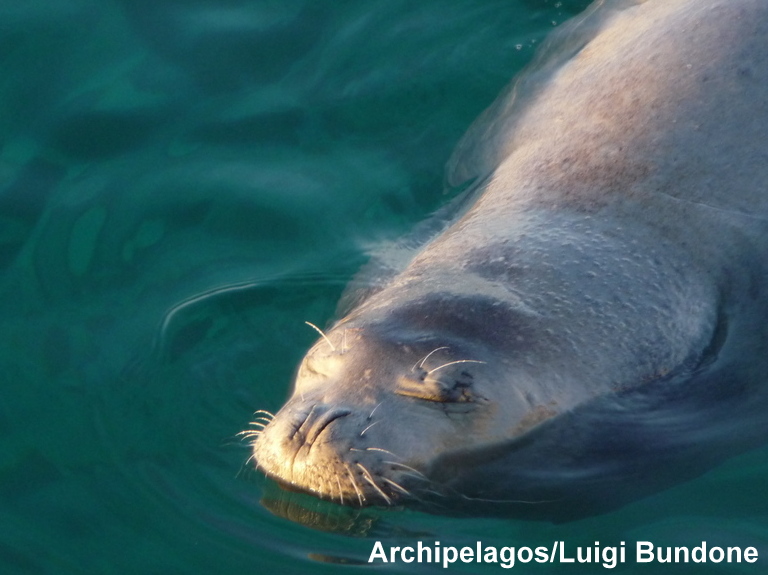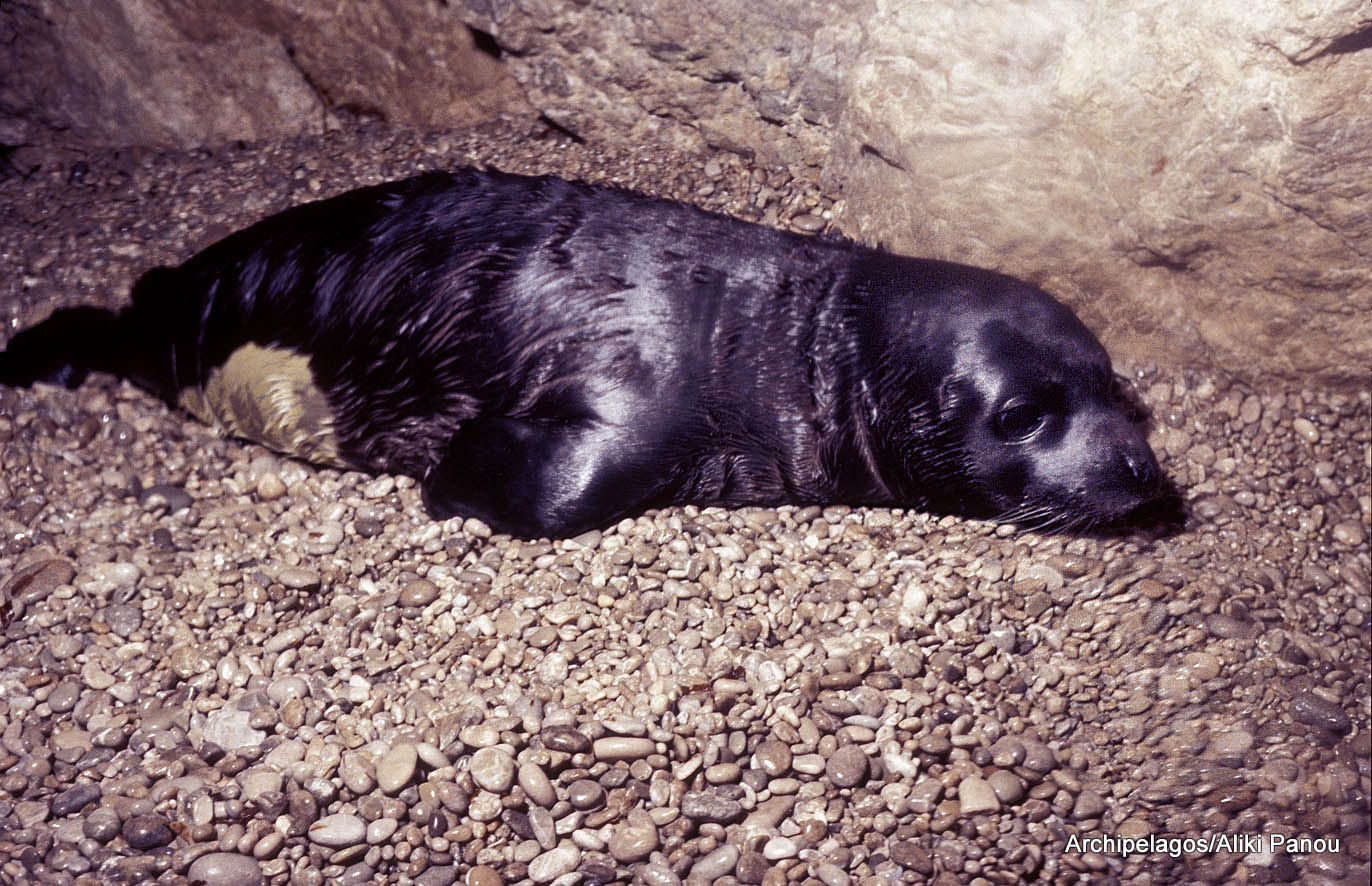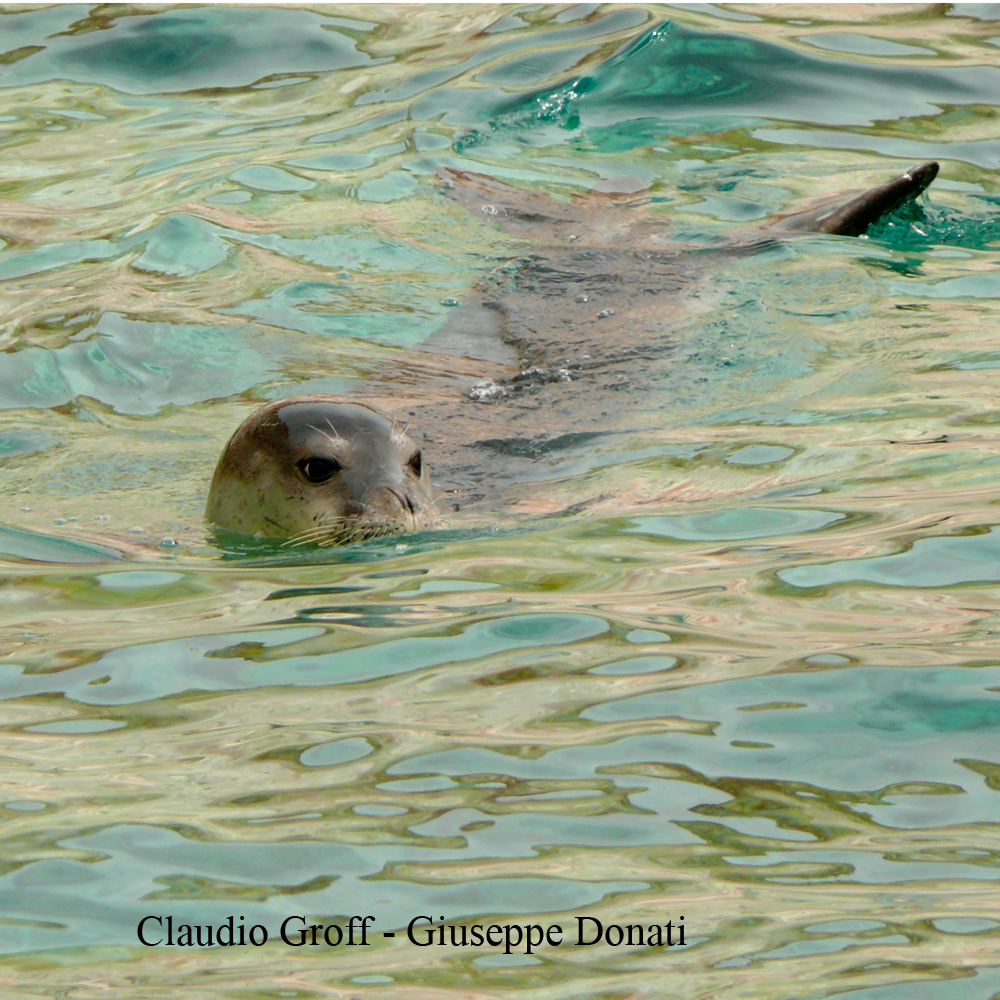The Mediterranean monk seal (Monachus monachus) is the rarest seal species in the world and the most endangered marine mammal of the European Union. In older times, the monk seal´s habitat extended all over the coasts of the Mediterranean, the Black Sea and NW Africa up to Madeira and the Azores islands. Today, these charming animals have disappeared from the Black Sea and, in most Mediterranean areas, only a handful still exist. The total world population is estimated to consist of approximately 700 individuals. A large population with a colony-structure lives in Cabo Blanco/Mauritania with 330 individuals and a small population in Madeira/Portugal with 18 seals. Half of the remaining world population – about 350 individuals – lives and breeds in Greek waters.
[For details see Activities, monk seal, tab Distribution]

Biology and ecology:
The monk seal is a marine mammal and, like all mammals, it breaths with lungs. Monk seals needs to come out onto the shore to sleep and give birth to their offspring.
Today, man’s disturbing presence and activities have driven monk seals away from the open beaches – they resort to quiet, inaccessible sea caves with a patch of beach.
[For details see Activities, monk seal, tab Biology]

Main threats:
Marine pollution, Over-exploitation of marine resources, disturbance through human activities, interaction with fisheries, loss of habitat.
[For details see Activities, monk seal, tab Threats]

Status: the species is protected by several international Conventions and the EU Habitats Directive along with the national legislation of each Mediterranean country. [For details see Activities, monk seal, tab Legal status]
What we have done:
Our general aim is the co-existence of man and the monk seal as a symbol of the rich marine resources in the Mediterranean as a whole. Thus, we implemented a holistic approach from the very beginning of our activities back in 1985 and for the first time ever at the international level.
[For details see Activities, monk seal, tab What we have done]



